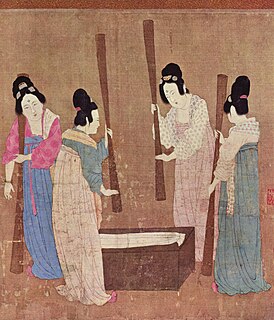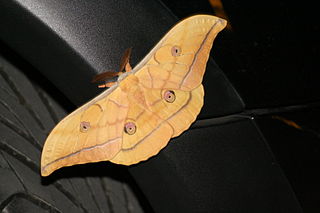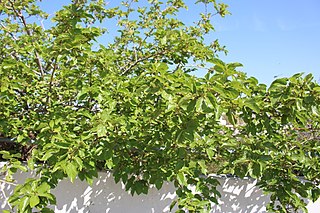 W
WSericulture, or silk farming, is the cultivation of silkworms to produce silk. Although there are several commercial species of silkworms, Bombyx mori is the most widely used and intensively studied silkworm. Silk was believed to have first been produced in China as early as the Neolithic Period. Sericulture has become an important cottage industry in countries such as Brazil, China, France, India, Italy, Japan, Korea, and Russia. Today, China and India are the two main producers, with more than 60% of the world's annual production.
 W
WAntheraea assamensis, known as the muga silkworm as a larva and Assam silk moth as an adult, is a moth of the family Saturniidae. The species was first described by T. W. Helfer in 1837. It is found in Assam in northeast India where 99% of its production occurs.
 W
WAntheraea paphia, known as the South India small tussore, the tasar silkworm and vanya silkworm is a species of moth of the family Saturniidae found in India and Sri Lanka. The bulk of the literature on this species uses a junior synonym, Antheraea mylitta, rather than the correct name, A. paphia. It is one of a number of tasar silkworms, species that produce Tussar silk, a kind of wild silk that is made from the products of saturniid silkworms instead of the domesticated silkworm.
 W
WAntheraea pernyi, the Chinese (oak) tussar moth, Chinese tasar moth or temperate tussar moth, is a large moth in the family Saturniidae. The species was first described by Félix Édouard Guérin-Méneville in 1855. Antheraea roylei is an extremely close relative, and the present species might actually have evolved from ancestral A. roylei by chromosome rearrangement.
 W
WAntheraea yamamai, the Japanese silk moth or Japanese oak silkmoth is a moth of the family Saturniidae. It is endemic to east Asia, but has been imported to Europe for tussar silk production and is now found in southeastern Europe, mainly in Austria, northeastern Italy, and the Balkans. It seems to be spreading north and a population has been reported near Deggendorf and Passau in Germany. The species was first described by Félix Édouard Guérin-Méneville in 1861. It has been hybridized artificially with Antheraea polyphemus of North America.
 W
WBangladesh Sericulture Development Board is a regulatory board in Bangladesh that is in charge of sericulture and is based in Rajshahi, Bangladesh.
 W
WBombyx mori, the domestic silk moth, is an insect from the moth family Bombycidae. It is the closest relative of Bombyx mandarina, the wild silk moth. The silkworm is the larva or caterpillar of a silk moth. It is an economically important insect, being a primary producer of silk. A silkworm's preferred food are white mulberry leaves, though they may eat other mulberry species and even the osage orange. Domestic silk moths are entirely dependent on humans for reproduction, as a result of millennia of selective breeding. Wild silk moths are not as commercially viable in the production of silk.
 W
WBorocera cajani, also known as Landibe in Malagasy, is a species of silk-producing Lasiocampid moth endemic to Madagascar. It is often confused for the similar Borocera madagascariensis, of whom it shares its Malagasy name with. However B. cajani is the species associated with silk production in highland Madagascar, while B. madagascariensis is found in the coastal portion of the island.
 W
WByzantine silk is silk woven in the Byzantine Empire (Byzantium) from about the fourth century until the Fall of Constantinople in 1453.
 W
WAntheraea pernyi, the Chinese (oak) tussar moth, Chinese tasar moth or temperate tussar moth, is a large moth in the family Saturniidae. The species was first described by Félix Édouard Guérin-Méneville in 1855. Antheraea roylei is an extremely close relative, and the present species might actually have evolved from ancestral A. roylei by chromosome rearrangement.
 W
WA magnanery is the site of sericulture, or silk farming, similar to a farm being the site of agriculture. The yeoman who runs it is called a magnanier or, more recently, a mangnan. The word magnanière, meaning building dedicated to sericulture, is also seen.
 W
WMorus alba, known as white mulberry, common mulberry and silkworm mulberry, is a fast-growing, small to medium-sized mulberry tree which grows to 10–20 m (33–66 ft) tall. It is generally a short-lived tree with a lifespan comparable to that of humans, although there are some specimens known to be more than 250 years old. The species is native to central China and is widely cultivated and naturalized elsewhere.
 W
WSamia cynthia, the ailanthus silkmoth, is a saturniid moth, used to produce silk fabric but not as domesticated as the silkworm, Bombyx mori. The moth has very large wings of 113–125 mm (4.4–4.9 in), with a quarter-moon shaped spot on both the upper and lower wings, whitish and yellow stripes and brown background. There are eyespots on the outer forewings. The species was first described by Dru Drury in 1773.
 W
WThe Satellite Silkworm Breeding Station, Coonoor, was established by the British Govt. in 1908 for manufacturing surgical suture guts for soldiers of Second World War. During 1919 the station became Sericulture Demonstration Farm-cum-Guts Section. In 1943 by acquiring lands, the Demonstration Farm was converted into Hill Rearing Station. During the years, the increased demand for silk for defense purpose made it imperative for strengthening the station for supply of industrial F1 silkworm seeds. Since the demand for "Foreign Race" to meet the male component necessitated the production of seeds at this station which had favourable climatic conditions the station was converted into Foreign Race Seed Station during 1944 and the station began to collect and maintain different exotic silkworm races from various leading silk producing countries of the World. These races were ultimately supplied to Central Silkworm Seed Station, Sri Nagar in 1958, where they were maintained as Germplasm Bank.
 W
WBombyx mori, the domestic silk moth, is an insect from the moth family Bombycidae. It is the closest relative of Bombyx mandarina, the wild silk moth. The silkworm is the larva or caterpillar of a silk moth. It is an economically important insect, being a primary producer of silk. A silkworm's preferred food are white mulberry leaves, though they may eat other mulberry species and even the osage orange. Domestic silk moths are entirely dependent on humans for reproduction, as a result of millennia of selective breeding. Wild silk moths are not as commercially viable in the production of silk.
 W
WSilkville is a ghost town in Williamsburg Township, Franklin County, Kansas, United States. It was located approximately 2 miles southwest of Williamsburg at the intersection of U.S. 50 highway and Arkansas Road.
 W
WBombyx mori, the domestic silk moth, is an insect from the moth family Bombycidae. It is the closest relative of Bombyx mandarina, the wild silk moth. The silkworm is the larva or caterpillar of a silk moth. It is an economically important insect, being a primary producer of silk. A silkworm's preferred food are white mulberry leaves, though they may eat other mulberry species and even the osage orange. Domestic silk moths are entirely dependent on humans for reproduction, as a result of millennia of selective breeding. Wild silk moths are not as commercially viable in the production of silk.
 W
WIn the mid-6th century AD, two monks, with the support of the Byzantine emperor Justinian I, acquired and smuggled silkworm eggs into the Byzantine Empire, which led to the establishment of an indigenous Byzantine silk industry. This acquisition of silk worms from China allowed the Byzantines to have a monopoly of silk in Europe.
 W
WTsumugi is a traditional slub silk cloth from Japan, though similar textiles are found in other countries. It is a tabby weave made from waste silk, which is in shorter lengths. The short threads are degummed and hand-joined to form a continuous strand before weaving, a technique also used for cheaper bast fibers. Threads are joined by twisting the ends to be joined in the same direction, then twisting the bundle of both in the other, to make a 2-ply thread at the overlap.
 W
WMorus alba, known as white mulberry, common mulberry and silkworm mulberry, is a fast-growing, small to medium-sized mulberry tree which grows to 10–20 m (33–66 ft) tall. It is generally a short-lived tree with a lifespan comparable to that of humans, although there are some specimens known to be more than 250 years old. The species is native to central China and is widely cultivated and naturalized elsewhere.